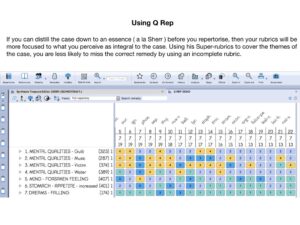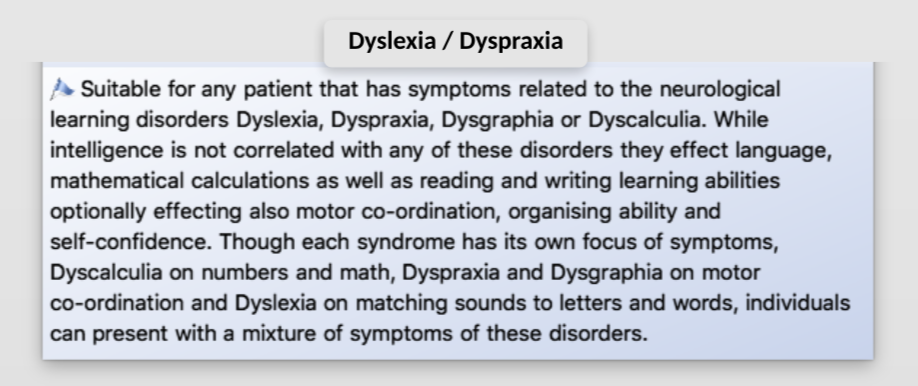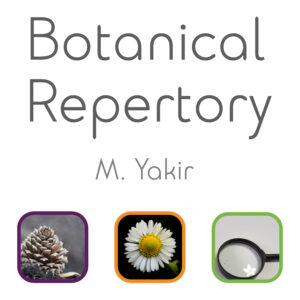Click here to discover Q Rep v4 (multilingual edition)

Jeremy Sherr explains his philosophy behind Q Rep
Q = Qualities
I call my repertory the Repertory of Mental Qualities, for four reasons:
- Quality means individual characteristics of a person.
- When choosing the degree of the remedy, I have emphasized the quality of information, as opposed to repertories based on Kent’s repertory, in which the degree is based on the frequency of the symptom. In my repertory I have focused on the quality of the symptom for each remedy and the quality of the source of information to decide on the degree I give it in Q-Rep. For example, while Lac-f appear in the first degree in “Fear of sharp things”, in the Q- Rep I give it four points as it is a prominent feature of the remedy, although from only one prover.
- I have put a strong emphasis on quality and accuracy throughout this work.
- This repertory should lead to an improvement in the quality of your results!
Description of Q Rep
- How often have you seen a case where it was clear that too much caring about others was a major issue? Have you had difficulties finding the most appropriate rubric to represent this idea? I certainly have. Should I use “Cares, full of, others about”, “Sympathetic” or perhaps “Anxiety others, for”? There are literally hundreds of rubrics that might be appropriate, and there is no way anyone can know them all.
- How often do we see a case where the patient presents a variety of issues related to money, resulting in a dilemma if to use “Fear of poverty”, “Avarice”, “Ambition, increased money to make” “Extravagance” etc. Again, there are hundreds of rubrics relating to money issues.
- How many times have you tried to repertorise low self esteem, victim, obsessive compulsive disorder or sensitivity to opinion of others, but found that the rubrics are too small, inappropriate or just not there. Which rubric do you use when your patient feels trapped or feels divided? Our patients have major issues which just do not always represent well in the conventional repertories or are fragmented into a many smaller rubrics.
- I remember many cases where the patient had many snake issues. I had to combine “Fear of snakes”, “Dreams of snakes”, “Delusion of snakes”, then added a materia medica word search for the word “snakes”, and still wished I could easily add all the snake remedies to my combined rubric. Occasionally I wanted plant remedies that relate to snakes names [e.g Cereus serpentinus]. It was repetitive work that took up a lot of my time.
- Finally, are you getting to use the hundreds of new provings that come out every year, provings that do not yet appear in the Materia Medica or repertories? The Q-Rep has the very latest homoeopathic data.
- I decided to compile a new repertory that would address all these issues, a repertory that would save time and be simple to use. A repertory that will increase your chances of finding the right remedy.
The Q-Rep is an easy solution to all the problems listed above, and it delivers much more.










